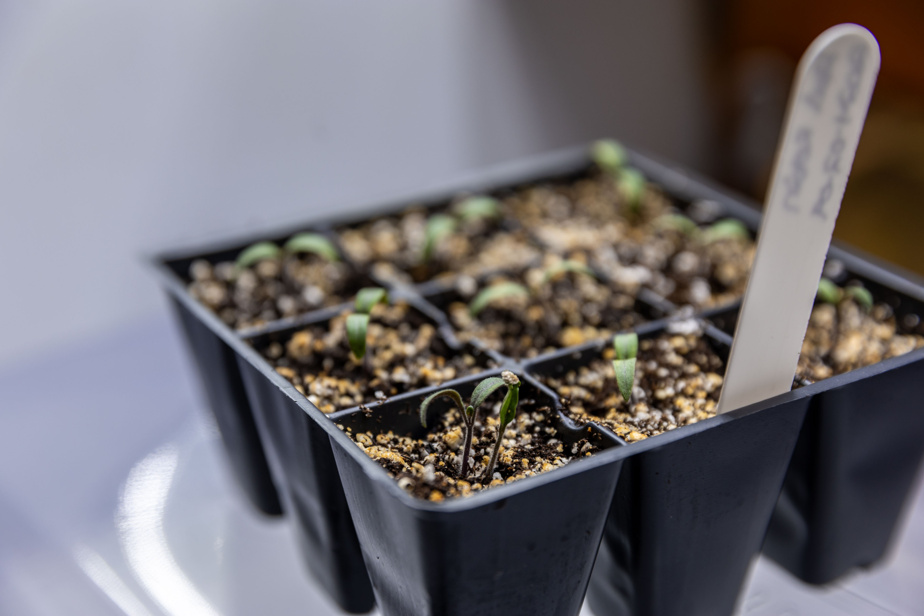-

PHOTO JOSIE DESMARAIS, THE PRESS
STEP 1. Fill the multi-cell tray with potting soil and wet the potting soil well under the tap. Leave to drain. On the labels, write the variety of the seed and the date.
-

PHOTO JOSIE DESMARAIS, THE PRESS
STEP 2. Make holes in the soil in the center of each cell, but not too deep.
-

PHOTO JOSIE DESMARAIS, THE PRESS
STEP 3. Place one to three seeds in each hole, depending on germination rate. For small seeds, you can use a seeder.
-

PHOTO JOSIE DESMARAIS, THE PRESS
STEP 4. Using your fingers, gently cover with potting soil. The seeds must be covered with a thickness of compost equal to their diameter.
-

PHOTO JOSIE DESMARAIS, THE PRESS
STEP 5. Place the seedling tray under a plastic dome, or in a plastic tray or under plastic wrap. This helps maintain high humidity, essential for germination. Place somewhere between 21 and 28 degrees Celsius. Heat mats are optional, but they can help some seeds germinate a little faster.
-

PHOTO JOSIE DESMARAIS, THE PRESS
STEP 6. As soon as the first seeds germinate, remove the plastic dome and place the seedlings in the light. The ideal is to install them between 5 and 10 cm under LED grow lights, for 16 hours per day, using a timer. Another option: the sill of a south-facing window. Also install a fan (model of your choice) to prevent the accumulation of gas between the leaves and excess humidity, which helps prevent fungal diseases, including damping off.
-

PHOTO JOSIE DESMARAIS, THE PRESS
STEP 7. Water frequently to keep the soil slightly moist. Soggy potting soil can cause young roots to rot. To maximize growth, you must aim for a good balance between air and water in the potting soil.
-

PHOTO JOSIE DESMARAIS, THE PRESS
STEP 8. When the cotyledons (the primordial leaves) unfold, identify the strongest plant in each cell, and gently pull off the excess plantlets. If necessary, transplant the seedlings elsewhere, gently splitting the soil with a butter knife.
-

PHOTO JOSIE DESMARAIS, THE PRESS
STEP 9. For the majority of plants, start fertilizing around the third week, following the dosages and frequencies suggested by the manufacturer.
-

PHOTO JOSIE DESMARAIS, THE PRESS
STEP 10. When the seedlings produce their second pair of true leaves (which they haven’t yet in the photo above), repot them into 3-inch pots. To avoid this step, which slows down the growth of the plant, Martin Lejardinier sows his seeds directly in three-inch pots.
-

PHOTO IVANOH DEMERS, LA PRESSE ARCHIVES
STEP 11. 7 to 10 days before transplanting to the garden, acclimatize the plants gradually, first in shade (2-3 days), then in partial shade (2-3 days), then in sun. Bring them inside at night when the temperature drops below 10 degrees Celsius.
1/11
What you will need
- Sowing soil (or all-purpose potting soil)
- Multi-cell tray (or perforated yogurt pots)
- Dome, tray or plastic wrap
- Indelible labels and pencils
- Seed packets
- Fertilizer, your choice
- Seeder (optional)
- LED grow lights and timer (optional, but ideal)
- 3 inch pots
